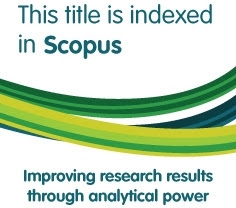Al-Ṭuqūs wa ‘alāqatuhā bi huwīyat muslimī Ulu Kapuas, Kalimantan al-Gharbīyah
Abstract
This article discusses a tradition of Muslim-Malay communities in the context of ritual and cultural identity. This study focuses on the Pangil tradition which are carried out by Muslim-Malay communities in Ulu Kapuas, West Kalimantan. This tradition is carried out by inviting the surrounding communities to commemorate the various events that they have been experienced, either joyful or sorrowful experiences. This article reviews the Pangil tradition by using anthropological perspectives to see patterns of cultural communication and their relationship with identities that represent the Muslim-Malay community. This tradition shows that the balance of life - both in the social and divine dimensions - is highly upheld by the Muslim-Malay community in the Ulu Kapuas. This can be seen in the ritual context which is filled with providing meals, recitating the Al-Quran, and praying for their ancestors. In the context of cultural communication, the Pangil ceremony teaches four things; the value of gratitude to God (nyelamat), sharing joy and sorrow (nyelamatand beruwah), social equality (banquet procession); and togetherness and helping each other (organizing tradition).
Keywords
Full Text:
PDFReferences
Crain, Mary M., and Felicia Hughes-Freeland. 2005. Recasting Ritual: Performance, Media, Identity. London and New York: Routledge.
Denzin, Norman K., and Yvonna S. Lincoln. 1997. Handbook of Qualitative Research. Yogakarta: Pustaka Pelajar.
Dessing, Nathal M. 2001. Rituals of Birth, Circumcision, Marriage, and Death Among Muslims in the Netherlands. The Hague: Peeters Publishers.
Devito, Joseph. 1997. Komunikasi Antara Manusia. Jakarta: Professional Books.
Douglas, Mary. 1950. “No Free Gifts.” In The Gift: The Form and Reason for Exchange in Archaic Societies, London: Routledge Classics.
Fananie, Zainuddin, and Atiqa Sabardila. 2000. Sumber konflik Masyarakat Muslim Muhammadiyah-NU: Perspektif Keberterimaan Tahlil. Surakarta: Muhammadiyah University Press.
Geertz, Clifford. 1960. The Religion of Java. Chicago: University of Chicago Press.
Gudykunst, William B., Stella Ting-Toomey, and Tsukasa Nishida. 1996. Communication in Personal Relationships Across Cultures. London: SAGE.
Hilmy, Masdar. 2013. “Whither Indonesia’s Islamic Moderatism? A Reexamination on the Moderate Vision of Muhammadiyah and NU.” Journal of Indonesian Islam 7(1): 24–48.
Humaeni, Ayatullah. 2016. “Ritual, Kepercayaan Lokal dan Identitas Budaya Masyarakat Ciomas Banten.” El-Harakah 17(2): 157–81.
Ibrahim. 2015. “Islam and Tradition in Nanga Jajang: Social and Religious Practices Of the Malay Community.” Al-Albab 4(2): 217–29.
Ibrahim, MS, Fitri Sukmawati, and Patmawati. 2016. Mengabdi di Jalan Dakwah. Pontianak: IAIN Pontianak Press.
Isman, Zainudin. 2001. “Orang Melayu di Kalimantan Barat: Kajian Perubahan Budaya Pada Komuniti Pesisir Dan Komuniti Pedalaman.” M.A. Thesis. ATMA Universiti Kebangsaan Malaysia.
Jub, Adi M. 2016. “Safrahan Dalam Budaya Melayu Sambas.” In Kearifan Budaya Islam Kalimantan Barat, ed. Muhammad Syaikhu Al Mau’izi. Pontianak: STAIN Pontianak Press.
Khusen, Moh. 2005. “Contending Identity In The Islamic Ritual: The Slametan among Surinamese Javanese Muslims in The Netherlands.” Al-Jami’ah: Journal of Islamic Studies 43(2): 283–308.
King, Victor T. 1993. The Peoples of Borneo. Cambridge: Blackwell.
Kuswarno, Engkus. 2008. Etnografi Komunikasi. Bandung: Widya Padjajaran.
Liliweri, Alo. 2003. Makna Budaya dalam Komunikasi Antarbudaya. Yogyakarta: LKiS.
Merrit, Walter Gordon. 1957. “Take and Give: Free Enterprise and Altruism.” American Bar Association 43(2): 123–26, 186–89.
Muhaimin, Abdul Ghoffur. 2006. The Islamic Traditions of Cirebon: Ibadat and Adat Among Javanese Muslims. Canberra, A.C.T.: ANU E Press. http://epress.anu.edu.au/?p=25911 (January 18, 2017).
Mulyana, Deddy. 2001. Ilmu Komunikasi Suatu Pengantar. Bandung: Rosdakarya.
Nasution, Harun. 1992. Ensiklopedi Islam Indonesia. Jakarta: Djambatan.
Newberry, Jan. 2007. “Rituals of Rule in the Administered Community: The Javanese Slametan Reconsidered.” Modern Asian Studies 41(6): 1295–1329.
Peterson, Peter G. 2007. “No Free Lunch.” The National Interest. https://nationalinterest.org/article/no-free-lunch-1666 (July 30, 2018).
Roger, and Stienfatt. 1999. Intercultural Communication. Witted State of America: Waveland Press.
Shabana, Ayman. 2010. Custom in Islamic Law and Legal Theory: The Development of the Concepts of ’Urf and ’Adah in the Islamic Legal Tradition. New York: Palgrave Macmillan.
Shihab, Muhammad Quraisy. 2004. 5 Tafsir Al-Misbah. Jakarta: Lentera Hati.
Stone, Walfred. 2003. “No Free Lunch.” The Swanee Review 111(2): 213–33.
Sudarman, Momon. 2015. Tradisi Empat Bulanan: Sebuah Tafsir Sosial Budaya. Bandung: STIKES Aisyiyah.
Sutiyono, Sutiyono, Syafiq Mughni, and Hotman Siahaan. 2015. “Puritanism vs. Syncretism: An Islamic Cultural Collision in the Rural Farmer Community in Trucuk, Indonesia.” Asian Social Science 11(28): 200–211.
Wallace, Alfred Russel. 1986. The Malay Archipelago. Singapore: Oxford University Press.
Wessely, Simon et al. 2003. “No More Free Lunches.” BMJ 327(7410): 341–43.
Woodward, Mark R. 1988. “The ‘Slametan’: Textual Knowledge and Ritual Performance in Central Javanese Islam.” History of Religions 28(1): 54–89.
Yusuf, Mohamad. 2013. “When Culture Meets Religion: The Muludan Tradition in The Kanoman Sultanate, Cirebon, West Java.” Al-Albab 2(1). http://jurnaliainpontianak.or.id/index.php/alalbab/article/view/20 (July 30, 2018).
Zaenuddin. 2013. Pengantar Antropologi. Pontianak: STAIN Pontianak Press.
DOI: https://doi.org/10.15408/sdi.v25i3.6579
Refbacks
- There are currently no refbacks.

All publication by Studia Islamika are licensed under a Creative Commons Attribution-NonCommercial 4.0 International License.
Studia Islamika, ISSN: 0215-0492, e-ISSN: 2355-6145
View My Stats
